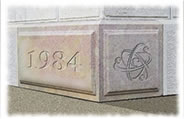One Discipline
“Once you start thinking this way, it’s really hard to switch it off.”
-Fusion Participant
What if there was a discipline, simple really, that would direct our communication practice?
It has three parts;
1. Establish an Objective
2. Analyze the Audience
3. Organize your Remarks
Call it a “Preparation Discipline.”
Give it a name, “Ready, Set, Go!®”
This discipline involves a certain amount of Creative Restraint. Before writing anything down, we must first put our attention on the outcome we hope to achieve – the action we want our audience to take. Then we lavish a lot of thought, research and care on discovering why our listeners might take that action.
Only then do we begin putting the presentation together. Since we’ve determined the outcome and the reason our audience will do what we’re asking, putting the work into a retell-able structure is comparatively simple. It’s easier to compose something if you know where it ends and how it has to get there… Since we use the same format for every presentation, we begin to build the habits which evolve into the discipline of a lifetime – a “template” for communication. Why a template? Because people are hard-wired for stories and parts – usually three parts. Why fight it? (Consider Goldilocks and the — Bears.) Some may think a template is rigid…actually it’s a visual roadmap for your listeners to follow that allows you the flexibility to engage with the audience – and stay on track.
Of course, not all communication is outcome focused. So this approach doesn’t apply to sonnets or love notes – unless… But business is about getting results, through a listener, who needs to be convinced and will recall and repeat your message.
The deep truth is it’s not about what you want to say, it’s really about what the listener, the sales force, management, the customer or the jury needs to hear and conclude in order to decide in your favor. It’s about results, not self-expression. If they only remember you and not your presentation, it wasn’t a success.
Many people are so married to the importance of their own worldview, that they go an entire career, still telling and talking – and wondering why they didn’t get the big promotion or the landslide victory…Perhaps if they had adopted a process…?
Now, the point.
Some of the questions we’ve received over the years…
Hey. “Ready, Set, Go!” is wonderful, but how should I prepare to run a meeting?
Hello. “Ready, Set, Go!” is great for presentations. Now help me plan a National Sales event.
Hi. “Ready, Set, Go!” works great. What do you suggest for setting up a conference call?
Greetings! “Ready, Set, Go!” is terrific. I’m working on a resume and a cover letter. Any ideas?
We don’t wish to oversimplify, but to our mind each of these applications is a perfect venue for the basic discipline of “Ready, Set, Go!”
The National Sales Meeting is a local or regional meeting writ LARGE. Often, these meetings lack a focused outcome. We believe the meeting planning should begin by asking these questions: “What do you want the guys to do when they are back in the territory?” “What information do they need, what training is required, what team building do they need – and what marching orders – in order to get started Monday morning?” There’s your agenda… Three days, three hours or thirty minutes, the presentation still breaks into chunks, and still needs tailoring to the audience. It’s still “Ready, Set, Go!”
Let’s not belabor the point. The Conference Call, the Resume, the Voicemail Message, the Letter and the White Paper are all examples of communication that yield to the one discipline of “Ready, Set, Go!” In each case, you’re either making a clear concise argument for a specific outcome – or – not. Perhaps we don’t need to look so far afield for a new and different set of tools. Maybe we simply need to look at the tools we already have and put them to work.
Applications
In your personal life: Are you getting the intended results from your communication? Does the auto mechanic have a clear understanding when you expect the car to be ready? Is there agreement on what “ready” really means?
In your family: How is your communication with your family? Could it be better? Before having an important conversation with a family member, first consider the intended outcome. Then analyze your audience to tailor the conversation to aging parents, teens or a significant other.
At the office: Are you using “Ready, Set, Go!” in all communications? Meetings, emails, voicemails? If not, dust off the pad and create your next communication in “Ready, Set, Go!”
“Ready, Set, Go!” is a tool. Using it is a discipline.
“Once you start thinking this way, it’s really hard to switch it off.”
“Ready, Set, Go!” and the Box Diagram are registered trademarks of The Fusion Group, Ltd.
Subscribe to our Newsletter


